Every small business owner knows that cash flow is vital to their success. You’ve got bills to pay and income to generate, while your business is buffeted by seasonal demand and unexpected events. Cash flow management can help reduce costs and risks while improving profitability and financial stability. We offer these small business cash flow tips to help our customers learn how to manage business cash flow in ways that boost their profitability and help them weather the economic storms that come their way.
Focus on Cash Flow Rather Than Profits
This might seem counterintuitive, as every business owner wants to be profitable, but cash flow management can help you improve your bottom line and help you survive any business slumps.
Monitor Your Cash Flow Regularly
Many small business owners are so busy promoting and running their business that cash flow management takes a backseat to other priorities. They are clearly aware of their income and expenses and understand the seasonal fluctuations their business experiences, but detailed monitoring of cash flow can provide valuable insights, help maintain a healthy cash position and help insulate you against financial surprises.
Your Cash Flow Management Should Include…. Everything
In addition to sales, your business might have interest income from savings or investments, or rental income if you own your building. Your expenses can include all purchases, payroll, rent, utilities, taxes, and loan payments.
If you’re an established business, creating a detailed cash flow statement and updating it regularly can help you identify any cash flow fluctuations while you’re busy running your business. New businesses in their development stage might generate little income, or none at all. Even so, you’ll need to monitor your burn rate and how much capital you’re using to project whether you may need additional funding before you can reach a positive cash flow.

Create a Cash Flow Statement
A cash flow management strategy doesn’t have to be as complicated as it sounds. You could start by creating a cash flow statement, in which you track your incoming and outgoing cash each day. Many small business owners discover that doing this regularly makes the task more manageable, and by making it a part of their daily routine, they’re more likely to continue this practice.
Develop a Cash Flow Forecast
Once you have a good idea of your cash flow history, you can develop a cash flow forecast that projects your future income and expenses based on your past performance. Many businesses are subject to seasonal fluctuations, so keeping track of where you’ve been gives you a better handle on where you’re going. If you haven’t been in business for very long, you might consult with trade groups in your field to get an idea of how business cycles could impact your future.
Optimize Your Receivables
Every business owner knows that some customers tend to be late with their payments. One reason for cash flow management is to help you track this, incorporate it into your forecast, and explore ways to improve the situation. For example, you might consider offering a discount to those who pay right after receiving delivery of your goods or services.
Manage Your Payables
If you find yourself juggling bills occasionally, you might prioritize payments that directly impact your business reputation or credit score. With your cash flow forecast in hand, you can assess when you will be able to make your payments on time. You may also negotiate a payment schedule that supports cash flow for both your business and your suppliers.
Plan for Seasonal Fluctuations
The Washington, D.C. area is known for business cycles driven by tourism, hospitality, government policies, and fluctuations in the federal workforce. This is why improving cash flow for small businesses in the DMV is crucial. It provides the financial and forecasting tools needed to navigate slow periods and optimize your funds.

Put Your Surplus Cash to Good Use
Having cash in the bank or in your cash register is valuable as a financial reserve, but you might miss out on investment opportunities by not utilizing it to enhance your income. This underscores the importance of cash flow management and forecasting. If your cash flow forecast indicates a decline in revenue within the next few weeks, it would make sense to retain those reserves to navigate through the slump.
On the other hand, if you’re in the middle of your most prosperous part of the business cycle, you could look for ways to invest these funds until you need them. Depending on when you expect to tap into them, you might negotiate a discount with your suppliers if you pay ahead of time.
You could also deposit these funds into a business money market account, a certificate of deposit (CD), or invest in treasury bills. You might also consider what’s known as a “CD ladder,” where you put your funds into CDs with different term lengths. This way, you could earn higher interest on your longer-term CDs while your shorter-term CDs would offer quicker access to your funds.
One of the benefits of money market accounts and CDs is they all receive FDIC insurance for up to $250,000 per account holder. If your business might exceed that FDIC limit, you could use what’s known as a Certificate of Deposit Account Registry Service (CDARS). With CDARS, you make one deposit with our bank and earn CD-level interest rates while we spread your deposits across multiple FDIC-insured banks. This way, your business can still receive FDIC coverage even on multimillion-dollar accounts.
Know When to Save and When to Grow
When your business is doing well, you’ll naturally think about expanding your operations, which would probably require more equipment and personnel. Many small business owners have taken the plunge and made those kinds of investments, only to experience a decline in growth.
This is another benefit of cash flow management for entrepreneurs, as it can help you make the best use of your resources and forecast potential weaknesses in cash flow that might disrupt your plans. Cash flow management can help you determine the best use of any windfalls and whether it would make sense to use it to grow your business, pay down debt, or invest these funds for a rainy day.
Avoid Cash Shortfalls
Financial advisors recommend that businesses maintain at least three months’ worth of operating expenses on hand as an emergency fund to cover any unforeseen expenses or cash shortfalls. You should keep these funds in an interest-bearing account that you could access whenever you need, such as a business savings account, money market account, or CD. Cash flow management can give you a good idea of how much an emergency fund you need to keep.
Consider a Business Line of Credit
Many of our business customers open a business line of credit that they can access at any time to cover any funding shortfalls. A recent Federal Reserve survey discovered that 59% of small businesses pursued new financing in 2024, and 56% of those who did used them to cover their operating expenses. Many businesses use a line of credit in addition to their emergency fund, especially those that experience seasonal revenue fluctuations.

Business Lines of Credit, Credit Cards, and Term Loans
Business lines of credit and credit cards each have their pros and cons. By having a cash reserve and a business line of credit, many businesses avoid putting major expenses on the company credit card. If you must carry a credit card balance, you’d pay a much higher interest rate than you would with a business line of credit.
Lines of credit typically have lower borrowing limits than business term loans, which are typically obtained with a specific need in mind, such as buying a piece of equipment or funding a business expansion. You might also receive more favorable interest rates on a term loan if you can use the equipment you’re buying as collateral. Of course, once you obtain a line of credit or a business credit card, they’re available whenever you need and can quickly access them in an emergency, whereas a term loan would take time to acquire.
While a business credit card does have a higher interest rate than lines of credit and term loans, they’re also easier to obtain, especially if your business is new.
Consider Leasing Equipment Instead of Buying
If you need to buy business equipment, you might pay for it in cash, obtain an equipment loan, or choose leasing. If you can pay for it in cash, doing so could deplete your reserves and leave you vulnerable to a slump. Cash flow management allows you to estimate your future cash needs, to help you avoid that problem. If you do need to preserve your cash reserves, consider using an equipment loan or a lease.
If you buy your equipment, you can deduct your loan interest costs and its depreciation costs from your business income taxes, if the equipment is used to generate income and has a useful life of more than one year.
For an operating lease, where you don’t take ownership of the equipment, you might be able to deduct your lease payments as a rental expense. With a capital lease, also known as a finance lease, your business would have the option of purchasing the equipment after a given period. The interest part of the lease payment is tax-deductible, and your depreciation costs might also be deductible.
Use the Right Financial Tools
Accounting software such as QuickBooks, Xero, and FreshBooks can help you with cash management, but you’ll need to keep track of all your income and expenses. They each have their strengths and weaknesses, so you can find one that best fits your needs. Here are a few popular options:
- FreshBooks is used by freelancers and small business owners for simple invoicing and time tracking tasks and is considered easy to learn.
- Xero is used by many small and growing businesses with the ability to import many types of data, although it’s reported to have quite a learning curve for new users.
- QuickBooks is a highly popular business accounting program used by businesses of all sizes for general accounting and invoicing, with additional features available for an added fee, such as inventory management.

Consider a Virtual CFO
While accounting software serves as a strong foundation for cash flow management, one of its standout features is its ability to connect to your business bank accounts, aiding you in analyzing your cash flow trends.
Business Insights, our free financial dashboard, gives you a clear look at your cash flow trends and performance with automated guidance to help you project your future cash flow and make decisions that impact your bottom line.
It also includes competitive benchmarking, allowing you to compare your business’s performance against other companies based on location, revenue, number of employees, and other factors. Think of it as your own virtual CFO that can make recommendations, offer personalized insights, and help you project the financial impact of your decisions.
Contact Us to Learn More about Cash Flow Management
At FVCbank, we specialize in Washington D.C. small business banking throughout the metro area, including Maryland and Northern Virginia. If you’d like to learn more about cash flow management and business financing, please contact us online, visit one of our locations, or call us at (703) 436-4740 to learn more about what we have to offer.




